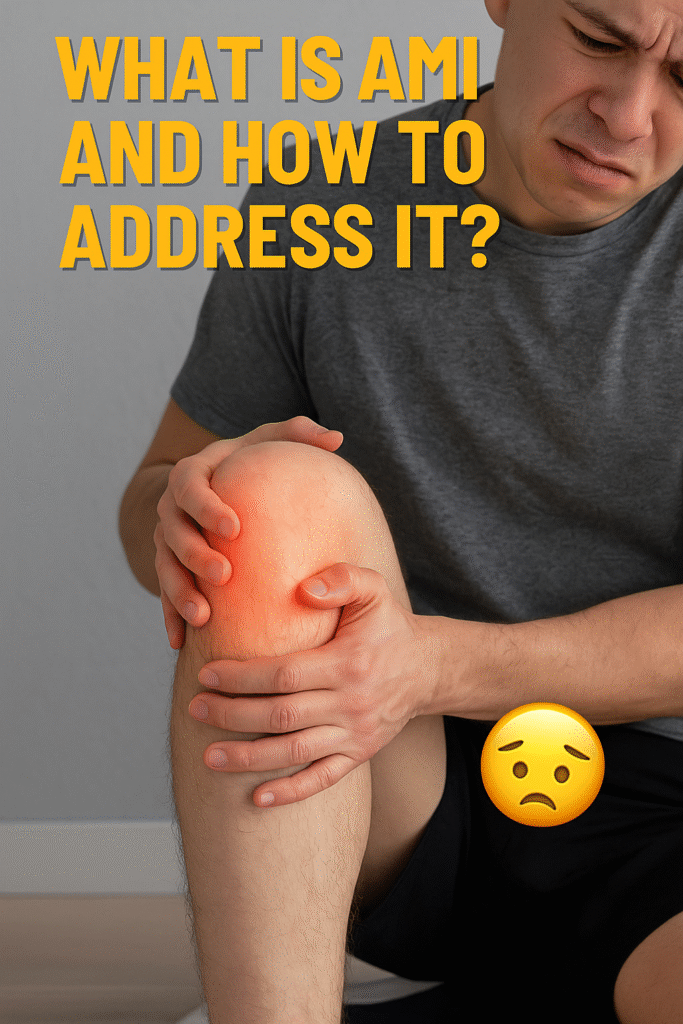
Ever felt like your leg just won’t “turn on” after a knee injury—no matter how hard you try? 😩 You might be dealing with a sneaky neurological problem called Arthrogenic Muscle Inhibition (AMI).
Let’s break down what it is, why it matters, and how we fix it—based on the comprehensive research by Norte et al. (Arthrogenic Muscle Inhibition: Best Evidence, Mechanisms, and Theory for Treating the Unseen in Clinical Rehabilitation) in the Journal of Sport Rehabilitation.
Disclaimer: this information is for your education and should not be considered medical advice regarding diagnosis or treatment recommendations.
🧠 What is AMI?
AMI is when your brain and spinal cord “block” your muscles from firing properly after a joint injury—even though the muscle isn’t actually injured.
This “shut off” is caused by:
-
- Swelling 🤕
-
- Pain 😖
-
- Joint instability 😬
-
- Inflammation 🧨
Your body thinks it’s protecting you… but the result is muscle atrophy, weakness, and poor movement patterns if it’s not treated fast.
🚩 How Do You Know If You Have AMI?
You may be dealing with AMI if you:
-
- Can’t activate your quad after ACL surgery
-
- Have lingering weakness even after pain improves
-
- Feel like there’s a “disconnect” between your brain and your leg
💪 How to Tackle AMI (Backed by Research!)
1️⃣ Focal Joint Cooling ❄️
Ice the entire joint (not just a bag on top!) for 20–30 minutes. This boosts your ability to recruit motor neurons and create stronger muscle contractions during rehab.
2️⃣ TENS (Electrical Stimulation) ⚡
High-frequency TENS therapy applied to the joint helps “override” the inhibition and improve muscle firing when paired with exercise.
3️⃣ NMES (Neuromuscular Electrical Stimulation) 🧷
This delivers direct stimulation to the muscle, helping rebuild strength and prevent early atrophy when voluntary movement is limited.
4️⃣ BFR Training (Blood Flow Restriction) 🩸
With low weights and a compression cuff, BFR mimics high-intensity strength training without overloading the healing joint. Great for early recovery!
5️⃣ Eccentric Cross Training ↔️
Training your opposite (healthy) leg with eccentric exercises actually boosts neural activity in the injured leg. 🤯
6️⃣ Biofeedback (Visual/EMG) 🧠
Seeing your muscle activate on a screen helps retrain the brain-muscle connection. Think of it like giving your quads a live performance review.
7️⃣ Motor Imagery & Attention Training 👀
Mentally rehearsing movement and using external cues (like “kick the cone” vs. “squeeze your quad”) helps restore proper neural drive.
📍 Why AMI Matters for Long-Term Recovery
If untreated, AMI can:
-
- Delay return to sport ⛔
-
- Cause chronic weakness 😞
-
- Increase reinjury risk 🚨
Fixing AMI is NOT just about doing squats—it’s about rewiring your nervous system and training smarter from day one.
🌟 Final Thoughts
AMI is the hidden enemy of full recovery after ACL surgery, knee injuries, and more. At Pain & Performance Coach LLC, we use cutting-edge methods like EMG biofeedback, BFR, NMES, and force plate testing to treat the neuro side of rehab, not just the muscle.
👉 Ready to wake up those sleepy muscles and get back to full strength?
📞 Call us today or 📍 visit us in Hillsboro, Beaverton, and the greater Portland area.
